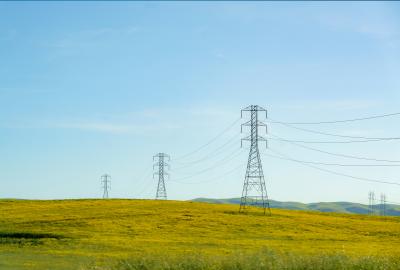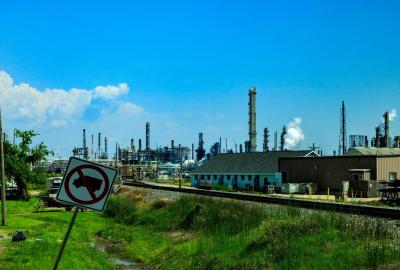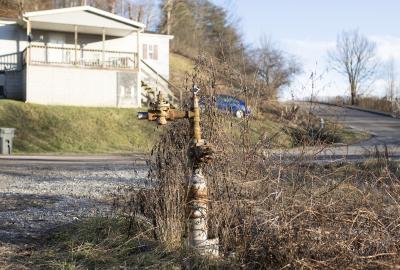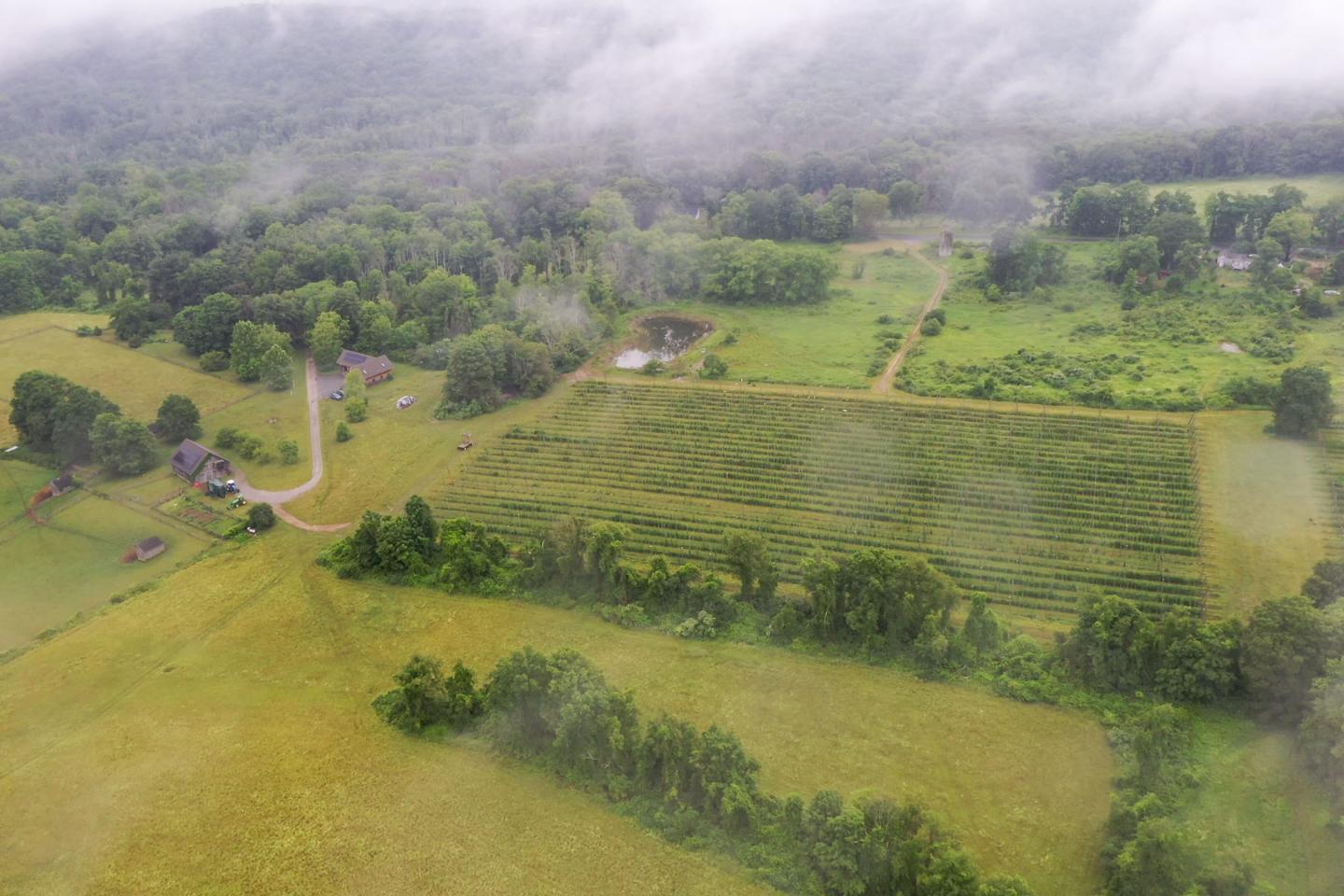
A brewing storm
A stable climate is an essential ingredient in the world’s favorite alcoholic beverage.
James Shepherd began farming hops less than a decade ago, but already, he sees the effect of a changing climate on the aromatic crops at his farm in northwest Connecticut.

“The changes have actually been quite shocking, and they’re accelerating,” says Shepherd, who, with his wife Shrevie Shepherd, purchased an old dairy farm in 2014 and renamed it Smokedown Farm.
“Over the past several years, the rainfall patterns have been moving toward extremes,” he says. “Rather than the steady, soaking rains that hops prefer, we increasingly have long droughts and then short bursts of heavy rain where most of the water is lost as runoff.”
“For hops — and indeed, most agriculture — that just doesn't work,” he says.
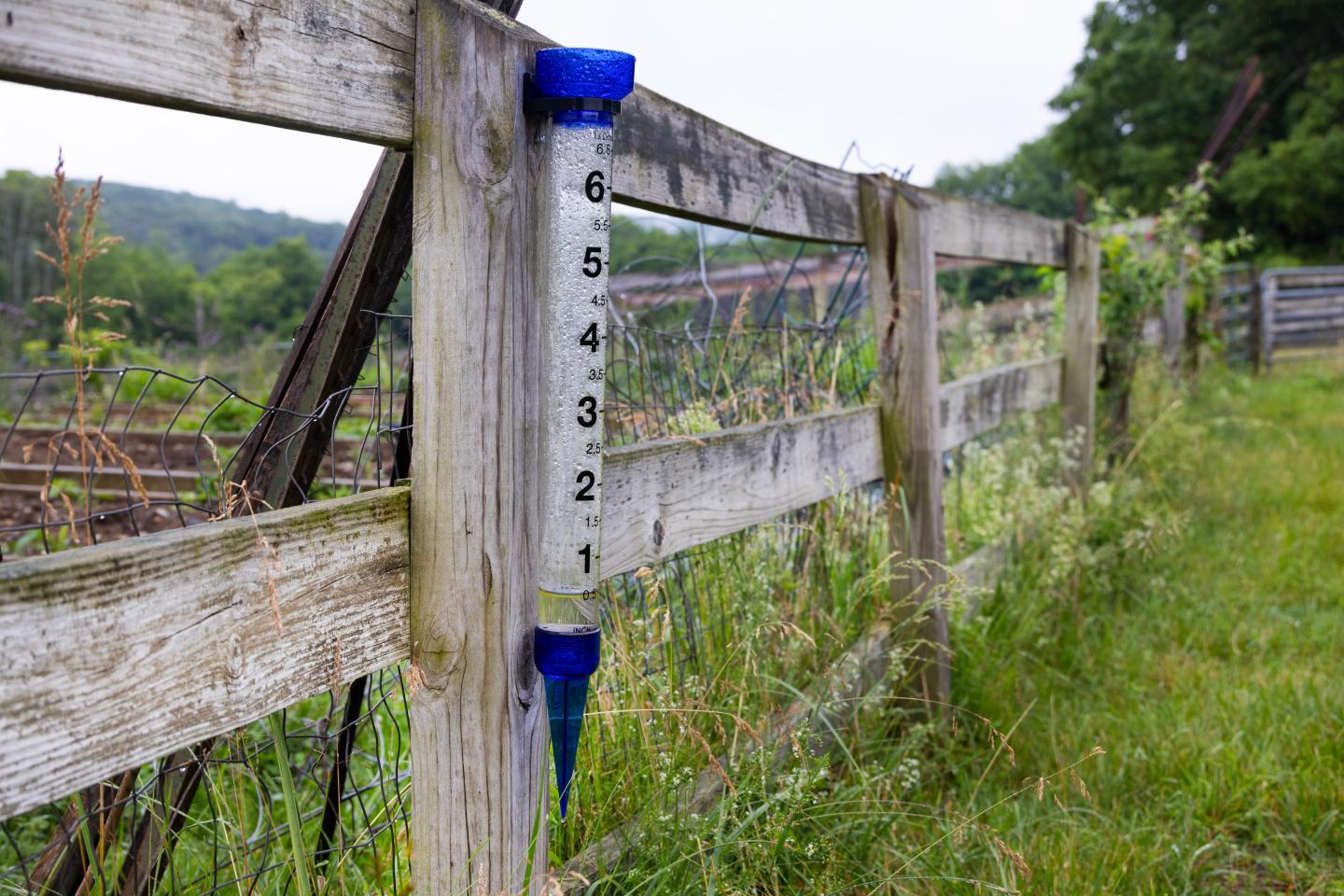
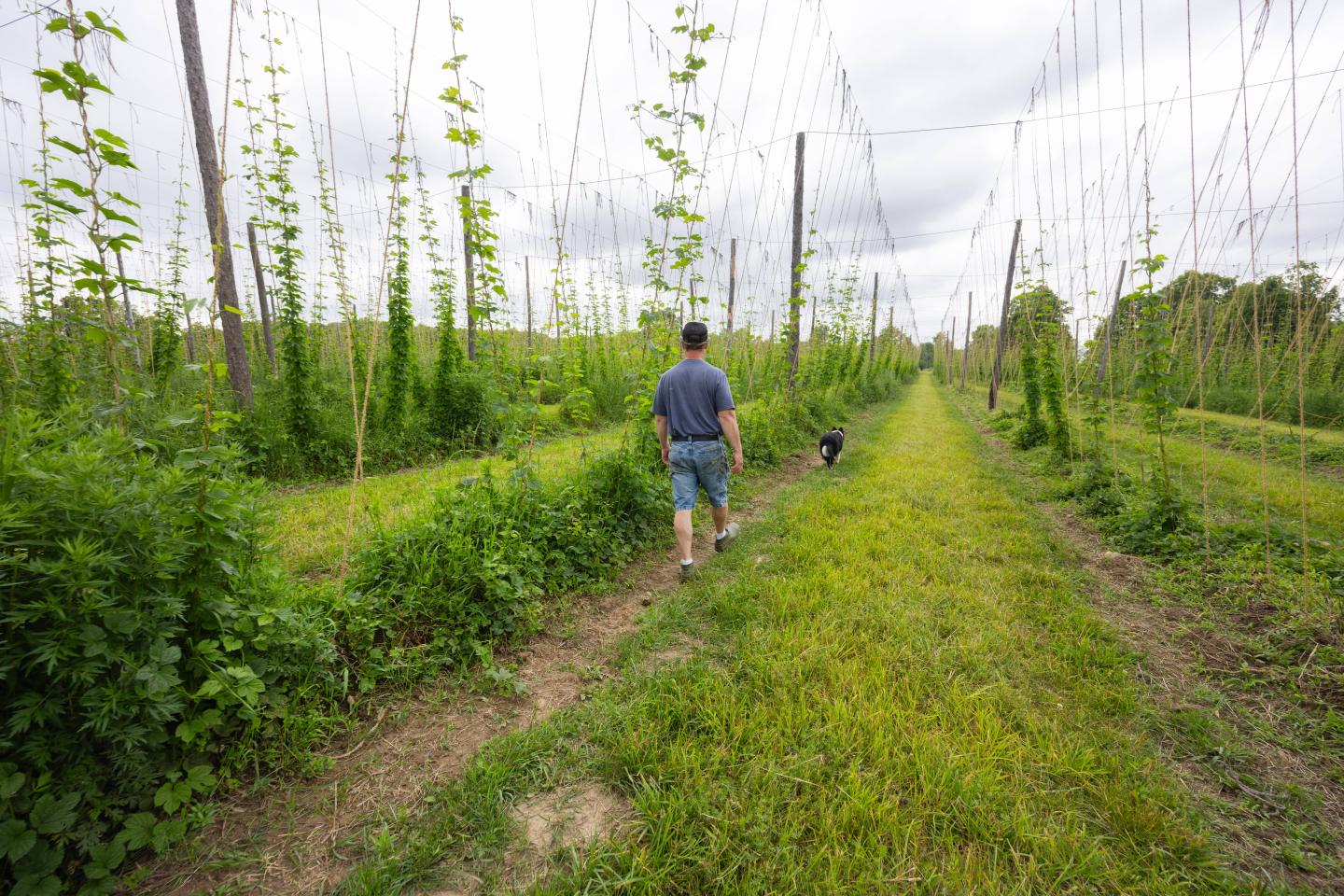
Long droughts followed by downpours do not help the hops grow.
Smokedown Farm may be a miniscule part of the roughly $37 billion global industry that produces ingredients for beer, but it's a fitting example of the challenges that climate change poses for the world’s favorite alcoholic beverage.
Hops are among the world’s fastest growing temperate climate plants. In the heat of midsummer, the lush and fragrant plants can grow up to 12 inches a day.
But to do so, they need plentiful rainfall, healthy soils, relatively predictable temperatures, and a healthy population of pollinators. In Connecticut and around the world, freshwater shortages, land degradation and rising temperatures are threatening brewers’ ability to thrive and even survive.
“Unfortunately, we decided to farm this rather finicky crop in a time of great change,” says Shepherd. “Just as we got established, we started swinging through these highly exceptional years, weather-wise.”
After a wet year in 2021, the farm was hit by drought in 2022. "We didn't get a single drop of rain from late June until early September,” says Shepherd, looking up at the 18-foot-high trellises that support the climbing bines (the technical term for hop vines). “The drought cut the season’s harvest by two-thirds.”
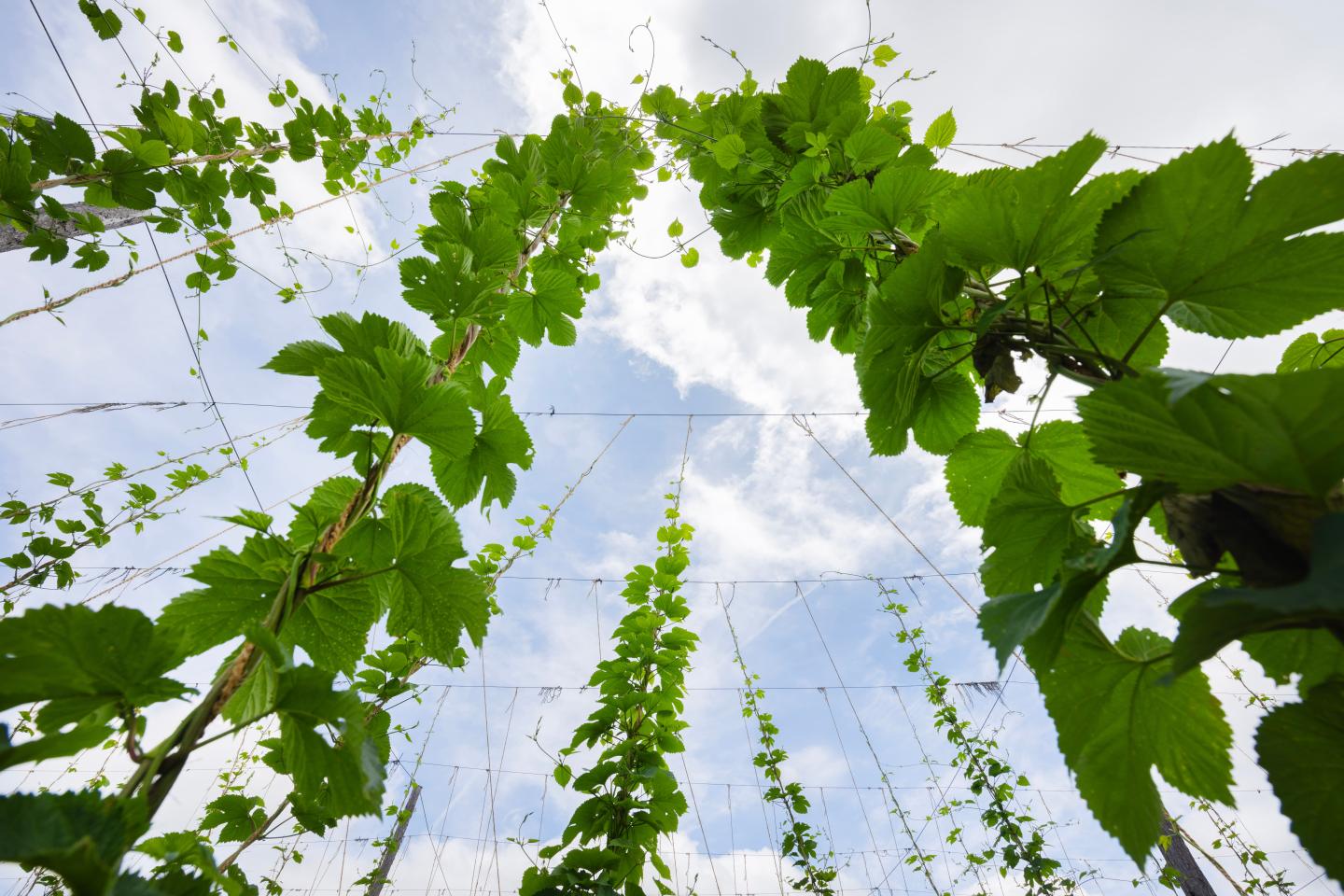
Then 2023's exceptionally wet summer brought the threat of downy mildew, a fungus-like microorganism that can infect and devastate cultivated hops.
When he started the farm, hops seemed like the perfect complement to the sheep and cows that graze on his 175-acre property. Shepherd spent youthful summers working on hop farms in his native Sussex, UK. Demand for locally grown hops had been expanding in Connecticut, along with the demand for locally brewed beer. But he hadn’t factored in such rapid changes in growing conditions.
“Our timing was right in terms of the demand, but I’m not sure it was right in terms of climate trends,” he says. “It’s a tricky crop to grow.”
Biodiversity in a bottle
When he’s not tending to his crops and animals, Shepherd is an infectious diseases specialist at Yale. He says he was drawn to farming, in part, to feed his fascination with the diversity of beer and its ingredients.
Today’s brewers can choose from more than 175 hop varieties to individualize their ales and lagers. To initiate fermentation, they can select from hundreds of strains of commercial yeast — or leave it to one of the thousands of wild varieties that circulate in the air. As for barley, the Svalbard Global Seed Vault in Norway alone holds more than 75,000 unique genotypes.
“Beer is a natural product whose ingredients have to be grown,” says Shepherd. “So far, there are no synthetic substitutes.”
But as much as the brewing industry and its suppliers depend on a stable climate and high-functioning ecosystems, they have also, in some cases, had a hand in destroying them.
Farming practices such as monocropping and using gasoline-powered machinery are significant contributors to the build up of greenhouse gasses in the atmosphere. These practices contribute to climate warming, as does the process of converting raw materials into finished beer. The industry still relies largely on fossil fuels to heat liquids and ship raw materials and finished products. And as a warming climate squeezes freshwater supplies in many regions, the brewing process requires about 20 gallons of water to produce a single pint of beer.
“We can’t be bystanders”
But it doesn't have to be that way.
Many forward-looking craft brewers and their suppliers are taking steps to reduce their impact on the Earth.
Breweries are finding ways to use water more efficiently, source more sustainably, upgrade to efficient and renewable-powered brewing systems and use cleaner vehicles for deliveries.
A few miles south of Shepherd’s Smokedown Farms, Kent Falls Brewing Company is located on a 50-acre diversified farm. Its founder is Barry Labendz, also a founding member of the Northeast Grainshed Alliance, which seeks to increase demand for northeastern grains and encourage collaboration between local growers, processors and buyers.
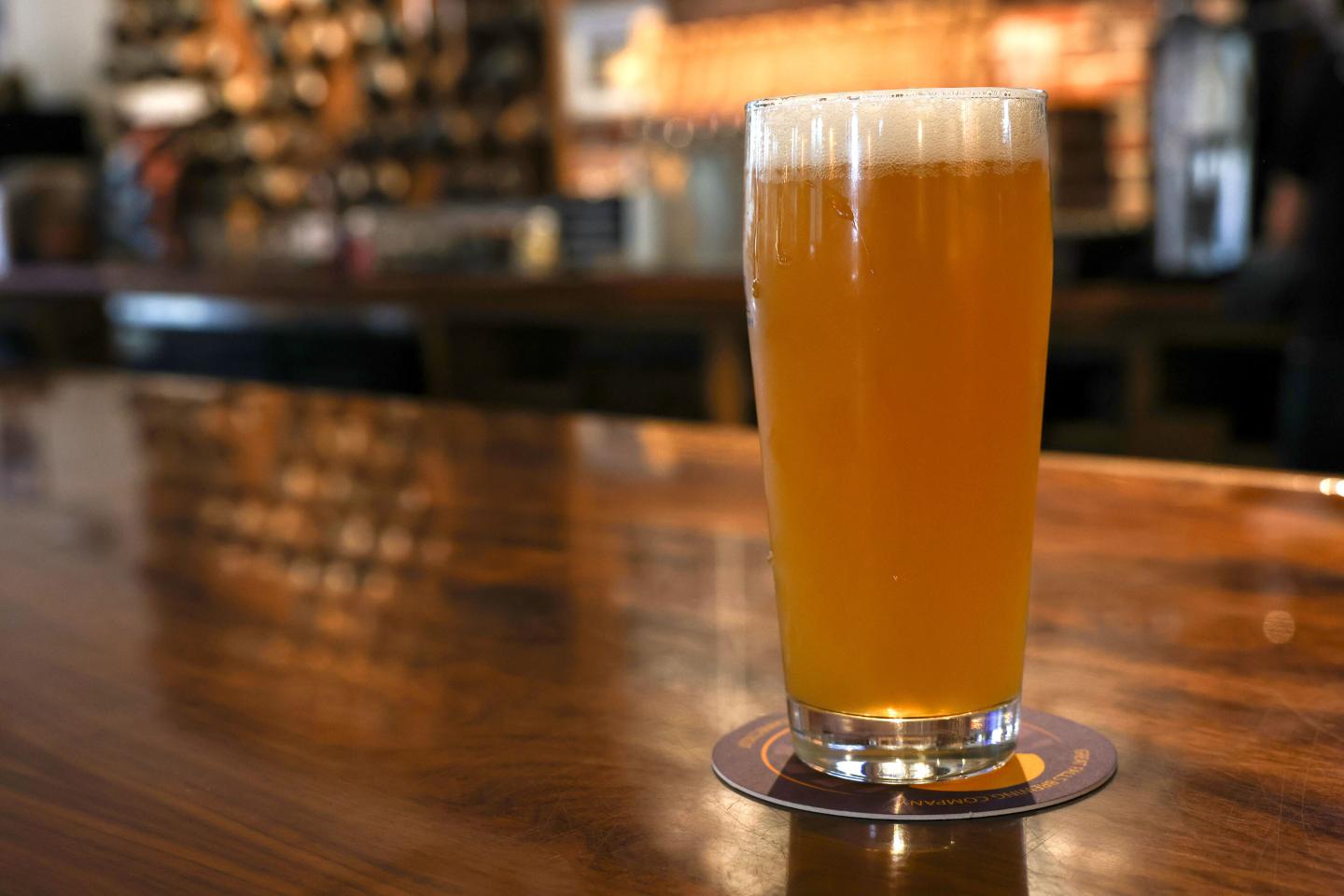
“Most craft brewers are realizing that we can’t be bystanders in the work of protecting natural systems and climate,” says Labendz, who often includes hops from Smokedown Farms in his recipes, in addition to locally grown and malted barley. “A connection to agriculture runs through everything we do."
“Small-scale, local farms improve food security and health, and are a way to push back against climate change," he says. "Plus, local hops and grains allow us to make unique beers that taste better.”
Kent Falls Brewing has also made a series of efficiency and climate-protecting investments. A solar thermal system, mounted on the roof of an old dairy barn turned tasting room and brewery, supplies preheated water to the brewery.
The system raises the temperature of the well water from 54 °F to 195 °F in the summer. The brewery also added four photovoltaic solar panels, which offset about 60% of electrical usage.
Labendz says his customers appreciate his brewery’s role in showcasing the flavor of the surrounding region, and in protecting green, open spaces in a state famous for its suburban sprawl. Grain shortages caused by the war in Ukraine have reinforced the need to re-establish the connection between brewing and local agriculture in New England, he adds.
Fermentation in flux
Farther south, near the Connecticut coast, the largest craft brewery in the state, Two Roads Brewing Company, has revitalized a 112-year-old factory to support a sustainable brewing process.
Roof-mounted solar panels power pumps that move liquid through brewing stages, and “smart” LED lighting automatically dims or brightens according to the time of day. The brewing process uses steam to boil the unfermented liquid produced from the malted grain, then captures that heat and uses it for the next brew.

When we were getting the brewery going 15 years ago, climate wasn’t in our thinking as much as saving money,” says Two Roads brewmaster Phil Markowski. “But the efficiencies we’ve invested in have paid off, in terms of both boosting our bottom line and shrinking our carbon footprint.”
Relief for thirsty crops
At Smokedown Farms the impulse for ecological protection runs deep. The hop yards sit alongside pastures, meadows and about 100 acres of forest.
“Two hundred years ago, all these woods were clear-cut and intensively farmed," says Shepherd. "Now we’re working on rewilding a large portion of the land, to preserve biodiversity in our community.”
Maggie Monast, who directs Environmental Defense Fund’s climate-smart agriculture programs, says small, diversified farms have an important role to play in providing healthy, local foods and supporting rural communities.
“Farmers at every scale have an impact on the climate and are also strongly affected by weather extremes,” says Monast. “We’re working with farmers to reduce climate pollution and help them build resilience to a changing climate.”
Strategies vary according to region, but they can include crop diversification, measures to improve soil health and more efficient use of fertilizer.
Toasting a sustainable future
At Smokedown Farm, Shepherd surveys his rows of hops, which have nearly reached their full height. Within a few days the aromatic flowers, known as cones, will begin to appear.
Last year, the plants never got the steady supply of ground moisture they needed to flourish.
This year’s outcome may be better, but considering the region’s recent trends, Shepherd anticipates challenging times ahead.
Asked what he would wish for beer drinkers in his adopted country as they’re tipping back cold glasses of beer on a summer day, Shepherd clutches his robust beard for a moment, and smiles.
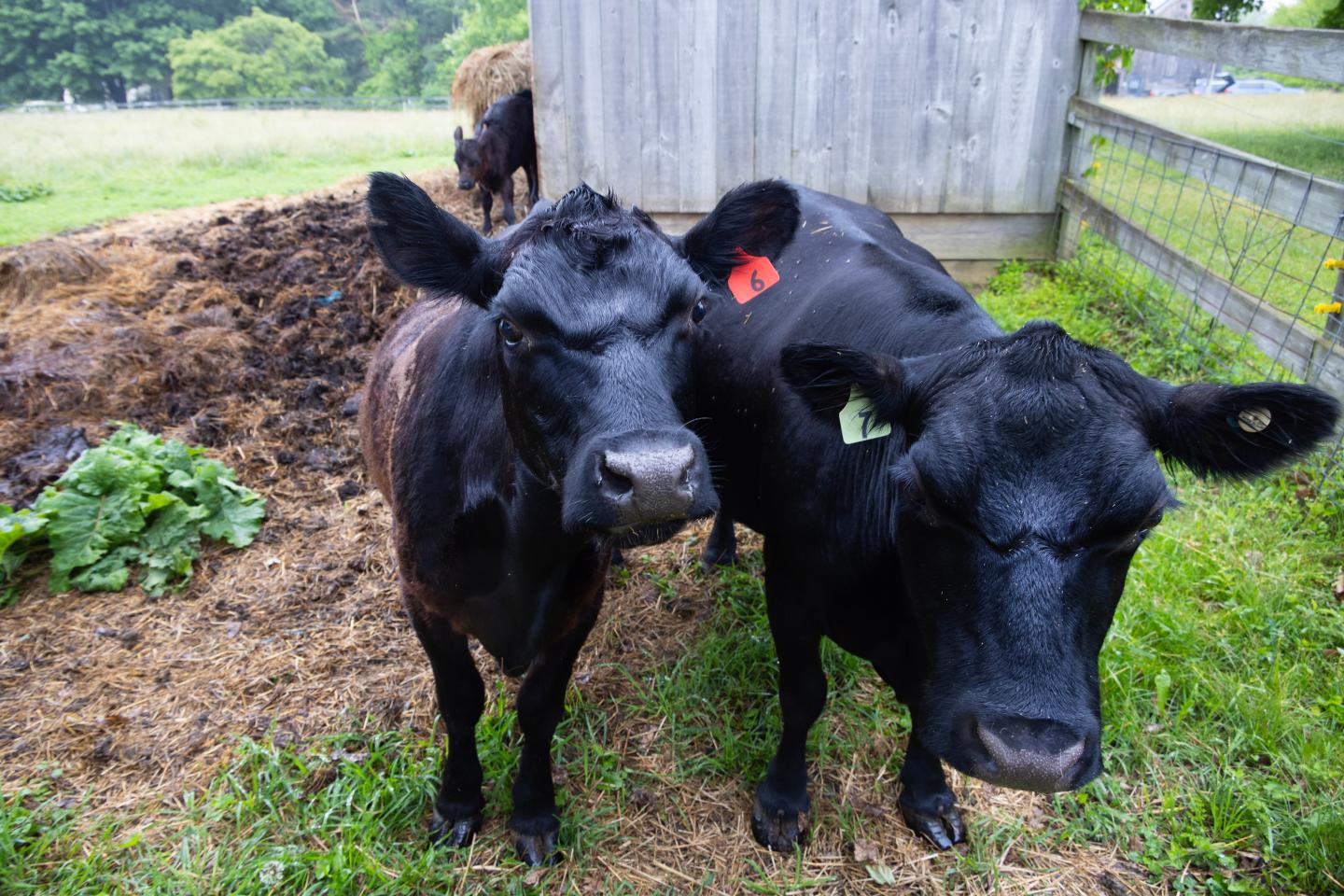
“I would hope that you’d have a pint that’s tasty, with some real character and fresh hop aroma. That it was produced by a brewery fairly close by, with ingredients that came from a small grower like us. That it supports jobs in your local community and helps to protect open space and biodiversity.
“And, finally, that you have the good fortune to enjoy it with great friends, in a beautiful place.”
Cheers to that.
